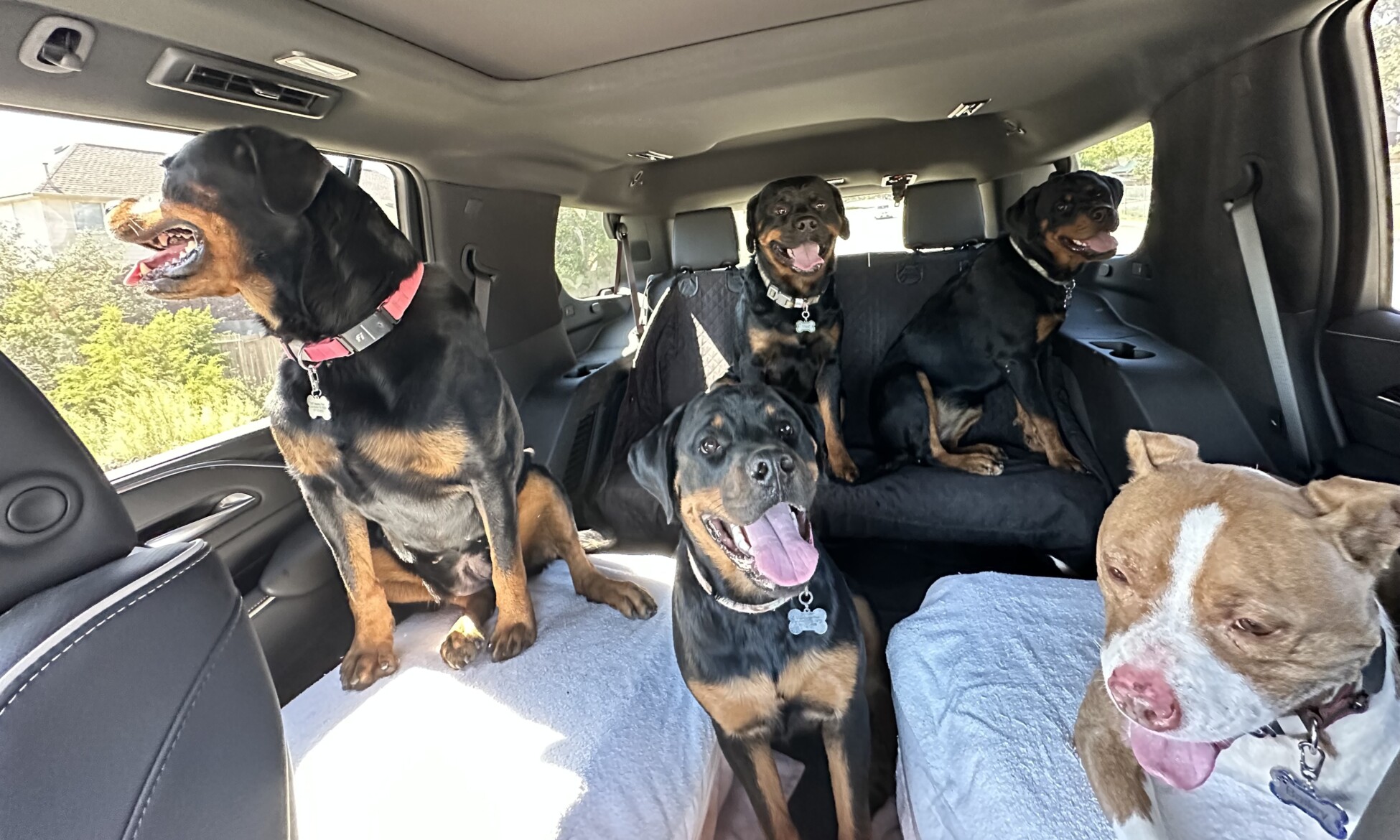
Ed
MemberForum Replies Created
-
-
From what I have seen on the AMAs and chats you do not want to put too much pressure on a puppy that young. So if you can do it with shaping and, like you said a wall, and the dog is happy to do it that is cool. But based on previous answers at 4 months we do as much as we can to let the puppy be a puppy.
It might be worthwhile to ask in the AMA or chat what would be a low pressure way to fix a sit.
If it is lopsided, the down or the sit, you can use a narrow platform a little bit longer than the dog and a couple of inches wider, 3-4 inches tall. Then do the sits and downs on that. The dog will self correct. In the beginning he/she may have a leg off the platform, but I do not think there is a need to correct as it will fix itself as you soldier on. I made one like that and covered with some carpet as just the wood was too slippery. Good luck!!
-
Ed
MemberJuly 9, 2021 at 9:55 AM in reply to: My 9 month old puppy is pulling grass out by it’s roots – help needed!Both of mine still eat grass. They are 6 and 4 years old. LOL. I think that is kind of normal. Overtime they became more discerning and they go mostly for the tall grass, as opposed to the lawn. They also stopped ripping the grass off the lawn and when they do go for it they are more the grazing type now.
When my Rottie was a young pup I think she got a kick of how powerful she was that she could rip things apart — but that might be anthropomorphizing.
I don’t remember if we did anything special to stop the ripping… probably just removed the opportunity for her to do that.
Sorry if that does not help much, but the ripping of the grass will become a found memory one day 🙂
-
Topic: Teaching dogs language concepts (“words”)
There is a project with about 3,000 participants that is tracking people’s attempt to teach dogs, cats, horses and other animals to use buttons to communicate http://www.theycantalk.org and how.theycantalk.org — the most advanced dogs have access to 90+ buttons and use a good portion of those. You may have seen some of the accounts on Instagram, YT, TikTok. Once the dogs takes off, the communication seems to go well beyond requests and needs, and dogs combining words to form new meanings (“poop play” = fart) and ask interesting questions (“where mom poop?”)
It would be great to get some tips on how to teach/model basic concepts/words that can be done in a training session, as opposed to based on the dog’s needs (e.g. pressing the button every time the dog goes potty, has a meal, needs bowl refilled with water). The needs-based modeling often presents only a few opportunities to model, and the dog’s owner may not be focused enough to take advantage of those, leading to very few events being modelled.
There is a correlation between the number of times buttons are modelled and the usage of those buttons.
So being able to have training sessions with your dog for specific words/concepts would be pretty cool.
Thanks!
-
I said I wind up the long leashes, but these are not retractable leashes. They are 5/8” plain cotton leashes and you just manage them as you would a rope.
That brings up another point which is choosing leashes that have a lesser chance to hurt the dogs if one pulls while the other is tangled up in some way.
-
Hi, it is a bit riskier to walk more than one dog at a time because if anything happens you are kind of limited to how you can physically control them. One dog you can put your hands on. Two dogs you kind of have to be just pulling leashes unless you manage to let one off. Same with tight spaces or sidewalks. Plus 2 dogs are stronger than 1 and they can tangle the leashes up in the middle of the action. You also have to be aware of 2 dogs and their surroundings while picking up poop. Once we got “attacked” by one of those small white dogs that was leashless. And now both my dogs really dislike small white dogs, as opposed to only one.
That said I still walk 2 at a time, one on the right, one on the left on a semi-relaxed heel. Left hand holds both leashes and the filled up poop bags. Right hand is free for a quick tug on one leash or another if needed. I let them have fun and do dog things in 2 or 3 spots in the walk.
Sometimes I use 30 foot training leashes and wind them up on my left arm for the walk, leaving about the same amount you would get with a 6 footer. Then on specific spots I unwind them and the get to walk and explore like a pack. Then wind back the leashes and we go back to heel. They do need to understand that those are different “modes” so that it does not spoil the heel.
You kind of need both to be already reasonable walkers or it is too much frustration for you and the dogs. Like if you are correcting dog #1 with about turns or stops it is not fair for dog #2.
-
Disclaimer: my experience is limited to 2 dogs…
On cars/bikes we conditioned them that when a car approaches we get off the road and onto someone’s lawn. Initially we just wanted the behavior that when a car comes we get off the road. It seems to have had the added benefit of desensitizing them to ATVs, bikes and other vehicles — well it is hard to say for sure since that is only two dogs and it is something we came up on our own.
For runners and other dogs a trainer told us to do a 180, walk, do another 180, walk again, then another, etc, back and forth a few times, keeping them busy with the job of following us until the prey had passed, then praise. This was 3 years ago, so I do not remember it all, but the basic idea was to make sure the dogs were working (movement work, not standing work) just before and during the distraction. Same idea if there was a distraction that we had to go through.


